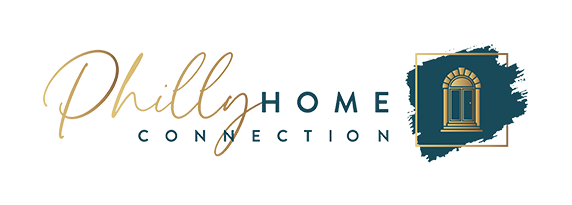Post by Erica Minutella
When you move to a new city, or even just a new neighborhood, one of the first concerns you might have to address is what the school system is like, and how easy a transition to a new school will be for your child. But when you’re confronted with nothing but aggregate sites full of facts and figures, it can be difficult to get the full picture of what your child’s experience at any given school will actually be like.
 That’s why we’re launching a new series of interviews with local Philly schools, to give you a behind-the-scenes look into the day-to-day activities of the students, parents, and teachers involved in making a school a second home.
That’s why we’re launching a new series of interviews with local Philly schools, to give you a behind-the-scenes look into the day-to-day activities of the students, parents, and teachers involved in making a school a second home.
For our first interview in the series, we talked with Emily Marston, Interim Division Director at The Philadelphia School, an elementary school based in the Center City area. They pride themselves in combining a mix of urban and rural learning experiences to give their students a well-rounded understanding of the world around them.
Can you start off by giving me an overview of The Philadelphia School’s background and history?
We were founded in 1972 by a group of parents who wanted to find a perfect location, in a school environment that emphasized a connection to the city and urban studies, and to the country and environmental studies. They got their inspiration through studies of the open school in England, and project-based learning that would focus on integrating the various disciplines. So you learn Math in order to understand Science. Science in order to make sense of literacy.
I love the idea of having the students go out into the communities to have a broader understanding of the world around them. Can you explain how that works on a day to day basis, between the country and the city?
Each grade cluster goes to the Schuylkill Center for Environmental Education every week starting in first grade.That gives us an opportunity for doing some field work, looking at elements of our science curriculum that can be integrated into the classroom. So for instance for the little ones if they’re studying frogs and toads they’re able to look really carefully at the actual animal in the wild. And they bring [those experiences] back and create frogs and toads in art class, or learn all about the history and science around animal husbandry. The older students can use it for mapping projects, for orienteering. There’s always the element of being out in the natural world and enjoying it. That’s an important connection, because if we expect students to be the leaders in environmental sensitivity going forward, they have to have a deep understanding of what it means to have a preserve like the Schuylkill Center.
As far as partnerships in the city, we have community service opportunities, like making sandwiches for My Brother’s House each week. We learn all about what it means to be homeless in the city. We currently have a relationship with the Philadelphia Museum of Art, where a group of 6th, 7th, and 8th graders are helping them work on a curriculum for middle-schoolers focusing on observation and description. We’re working with the Chester Arthur School to write lyrics for songs that will eventually be performed by the Temple University Symphony Orchestra. We have teachers and parents who are anxious to have more of these collaborative experiences for students to really understand the arts industry in Philadelphia.
As far as the parents go, how active would you say that they are with the school?
Parents are as active as they choose to be. We have parents who come in and teach mini courses. We have parents who sit on our Board, in our parent organizations, and they create the signature events that tie our school together. We have a Thanksgiving feast every November, which really depends on our parents coming in to help orchestrate, bake, etc. We have parents who come in and fill in in the classroom. We have a monthly Constitutional program in the middle school, where folks who are practitioners related to Constitutional work will come and lend their expertise to helping us understand why the Constitution is an important document. It’s a variety of experiences.
Can you give me a look at some of your extracurricular programs?
After school almost 90% of our students are involved in some activity till about 5 or 6 o’clock at night. We have sports teams for the middle-school-aged folks. We have a variety of arts organizations come in and do drama, crafts, ballet, karate. There’s sports clubs for even the smallest ones: Soccer Shots, Movement Classes. That’s on an ongoing basis during the year, and in the summer we have an active four-week camp program where students can enjoy more traditional camp activities. We just started an institute for our youngest who need some extra practice in mathematics and literacy, and we hope to expand that program next summer as well. So there’s a variety of after-school activities as well as summer enrichment and support programs.
What kind of opportunities do your students generally pursue later in life?
As far as colleges go, it’s all over the map. It really is a function of how they can find some of these interconnected learning opportunities. So one young man, who happens to be my son, was looking for a college where he could integrate his love of biology and genetics with his interest in the classics and archeology, and so he has become an archaeologist because of that thinking that all these things are related. We have lawyers, we have folks who are deeply committed to the arts, and they all choose some area that has a service or educational component to it. They really feel that their work is beyond the narrow confines of their job. They reach out and see a bigger picture, a bigger role for them in the community.
Are there specific neighborhoods in the Philly region you tend to serve more than others?
Because we’re next to rather large institutions like University of Pennsylvania and Drexel University, we have a larger reach than one might suspect. We’re heavily Center City, but we also draw from West Philadelphia, the Northeast, even from New Jersey.
Can you tell me a bit about your role there?
I have been at the school since 1984. My first role was as a parent and then in 1987 I came onto the school as a teacher in the middle school. I’ve worn the hats of Co-Principal and Associate Head. I’ve focused mainly in the last 18 years in the middle school as an 8th grade social studies teacher. Right now I’m serving as the interim Division Director for the middle school grades six through eight. I’ve participated in this school as a parent, as an administrator, as a teacher. This has been my home.
The Philadelphia School is located at 2501 Lombard Street in Philadelphia. You can learn more by visiting the school’s website, or simply call 267.231.5484.
Is there a school you’d like to see featured on the blog? Let us know in the comments, or shoot an email over to phc(dotted)christina(at)gmail(dotted)com!


